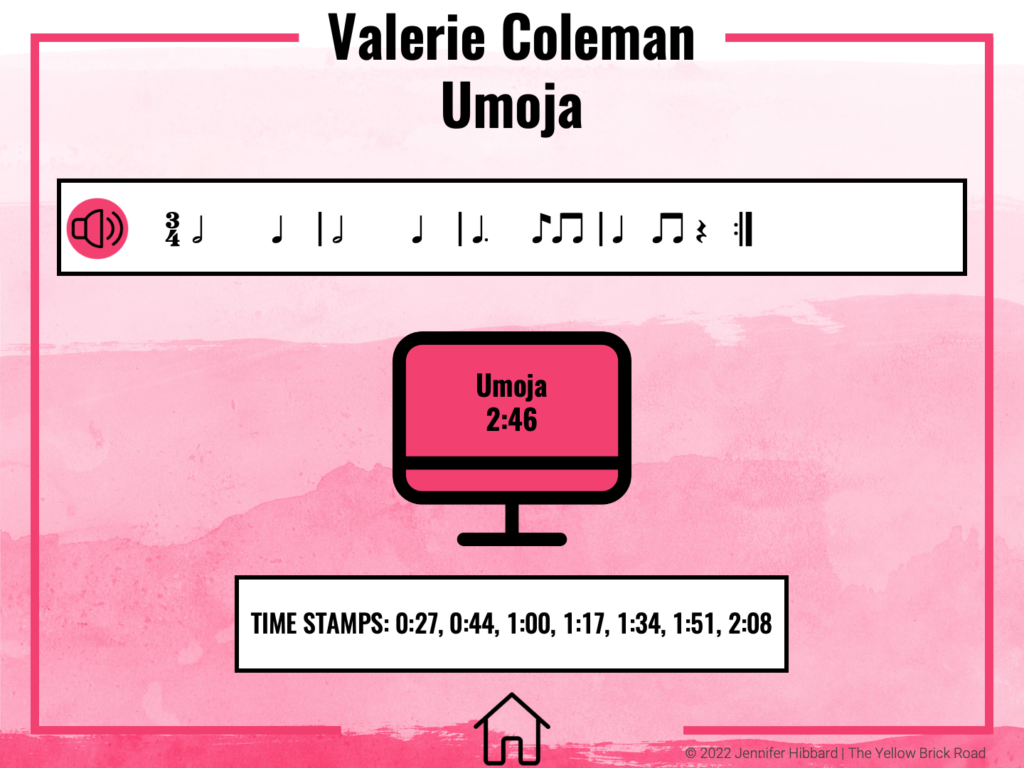Umoja by Valerie Coleman is a fantastic piece for introducing, practicing, or reviewing rhythms. My favorite recording of this piece is the one by Imani Winds, featured below.
Rhythm
One of the things I looked for when choosing symphonic works for the general music classroom was their length. If students were listening to an audio clip (no visuals), I tried to keep it at 30 seconds or less. When showing a video with performers or graphical notation, I kept it at four minutes and under. These numbers varied based on the class, but these were the general guidelines I used that worked well for attention spans and class time.
Teacher Tip: YouTube has a handy feature where you can filter by duration (under their search bar), so that I can choose from videos that are four minutes or less.
For Umoja, I focused on the following rhythm pattern shown in the slide below:

You can download a copy of the slide shown by clicking HERE, where you’ll get a Google Slides version. If you want the entire Classical Rhythm Patterns resource, click HERE to see it in my store.
For general or elementary music classes, we can begin by focusing on the sound and feel of the rhythm pattern. And one fun way to do this is by having students play rhythm instruments. Here’s an example of how you can sequence a rhythm instrument activity:
- During the first video watch; clap the rhythm pattern each time it occurs
- During the second watch, ask students to clap/tap along with you
- Pass out rhythm instruments to each student; practice the rhythm pattern without the video
- Watch the video for the final time while students play the rhythm pattern on their instruments
- For an added challenge, have students sit in a circle and pass their instrument to the right each time they play the rhythm pattern
- This helps keep interest high and is a good practice for performance technique; for example, reminding students how to hold their hands while playing claves
Rhythm Pattern Competition
As always, I like turning any activity I can into a game. In general, I tend to avoid competition, but I think collaborative games that involve classes working together as a team can be helpful in building community:
- Follow the lesson with rhythm instruments as described above, then ask students how many times they heard the rhythm pattern in the music
- Depending on the piece you choose, you may want to specify that they should include slight variations of the rhythm in their count
- Choose the number with the most votes as that class’ official answer
- Do the same with other classes throughout the week or month
- Reveal the correct number and add points to each class that guessed correctly
- If you have a musical treats jar or other class incentive program, this could be incorporated into it
- If possible, give kudos to those classes during the morning announcements or other similar shout-out
- Do your best to ensure that all classes are successful in their guess at some point throughout the year
- This might mean giving come classes extra listens before they have to guess a number
- Or create extra challenges for classes that would benefit from them
